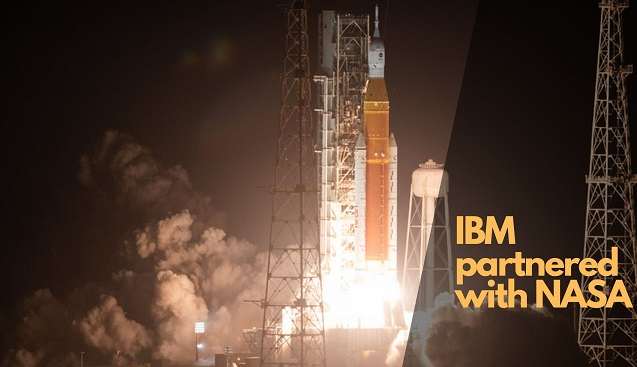IBM partnered with NASA to study climate change with AI
The idea is that the technology collects data and can make weather and climate predictions.
IBM’s new foundational model technology will leverage NASA Earth Science data for geospatial intelligence as the company and the Marshall Space Flight Center announced a collaboration to use artificial intelligence (AI) in Earth-observing satellites.

Foundational models are types of AI models that are trained on a large set of unlabeled data, which can be used for different tasks and allow information about one situation to be applied to another.
These models have advanced rapidly in the field of natural language processing (NLP) technology over the past five years, where IBM is pioneering applications of foundational models beyond language.
The idea is that the Earth observations that allow scientists to study and monitor our planet and which are collected at an unprecedented rate and volume have a new approach and insights can be drawn from these vast data resources.
Post– ‘Misused’ AI speech technology causes deep fakes to overwhelm an online forum
That gives researchers an easier way to analyze and gain insights from these large data sets, and IBM’s foundational modeling technology can help provide answers to the world’s climate-related problems.
IBM Principal Investigator Raghu Ganti said, “Foundational models have proven their worth in natural language processing, and now is the time to expand them into new domains and modalities important to business and society Applying foundational models to geospatial data, sequences of events, time series, and other non-linguistic factors within Earth science data will make valuable knowledge and information available to a much broader group of researchers, businesses and citizens,”
There are several technological responses that IBM and NASA are working on because as information is extracted from Earth observations, one of the projects will train a foundational IBM geospatial intelligence model with the Harmonized data set. NASA’s Landsat-Sentinel-2 (HLS) to record Earth’s surface and land-use changes captured by Earth-orbiting satellites.
That will be done by analyzing petabytes of satellite data to identify changes in the geographic footprint of phenomena such as natural disasters, cyclical crop yields, and wildlife habitats.
Rahul Ramachandran said, “The beauty of foundational models is that they can potentially be used for many downstream applications and that development cannot be tackled by small teams, you need teams from different organizations bringing their different perspectives, resources, and skills”
Another result of this collaboration is to be a corpus of Earth science literature that is easily searchable for information.
For this, IBM developed a natural language processing model trained on nearly 300,000 Earth science journal articles to organize the literature and facilitate the discovery of new knowledge. With one of the largest AI workloads trained on Red Hat OpenShift software to date, the model uses PrimeQA, an open-source multilingual question-and-answer system from IBM.
Under the agreement, other possible projects between IBM and NASA include creating a foundational model for weather and climate prediction using MERRA2, a dataset of atmospheric observations to be collaborative over the next decade.
Related Post– ChatGPT unleashes a stampede of stock traders for all kinds of AI
Post– The founder of Gmail claims that ChatGPT can “kill” Google in two years.
